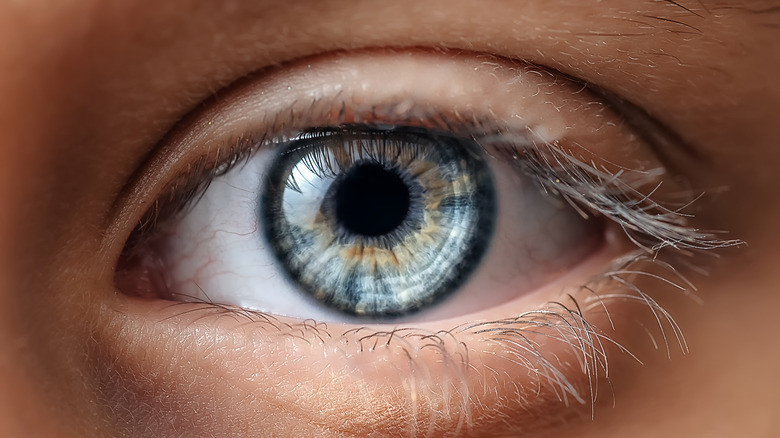How Rare Are Blue Eyes?
Believe it or not, blue eyes aren't as common as you might think. In fact, they're actually pretty rare. While most babies of European descent are born with blue eyes, only a small portion of the population will maintain this color into adulthood. That's because eye pigment tends to develop over time. According to Best Life, blue irises have less melanin than brown, green, or even hazel eyes.
As babies develop and grow, their eye colors will become progressively darker unless they have a mutation on the OCA2 gene. This mutation changes the way the body produces pigment, resulting in blue eyes. In fact, a 2008 study published in Human Genetics found that blue-eyed people are all very distantly descended from an ancestor with this genetic mutation. However, the number of people who have blue eyes is dwindling and tends to be more prevalent among those living in certain geographical areas.
Blue eyes aren't the rarest eye color
As a result, only 8% to 10% of the world's population has blue eyes, according to Healthline. Blue eyes are also much more common in Europe, especially in Scandinavia. However, blue eyes aren't the rarest eye color in the world. As it turns out, the award for the rarest colored iris goes to gray eyes.
Although gray eyes tend to get lumped in with blue eyes, they are a distinct and extremely rare eye color, Verywell Health reports. In fact, less than 1% of people have gray eyes. Green eyes are a close second, however, making up 2% of the global population. It's also quite uncommon to have two different colored eyes. This is known as heterochromia — a condition that causes either all or part of the iris to be a different color than the other. Less than 200,000 people in the U.S. have heterochromia.


